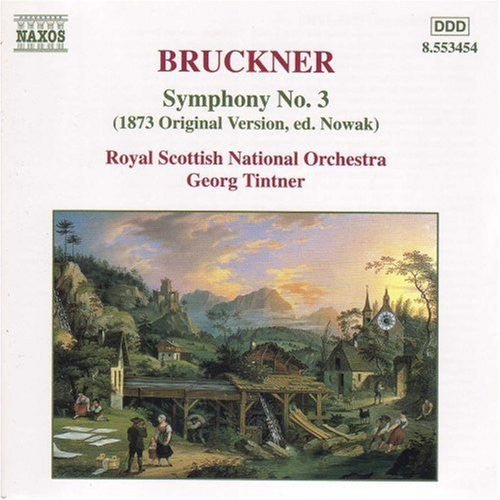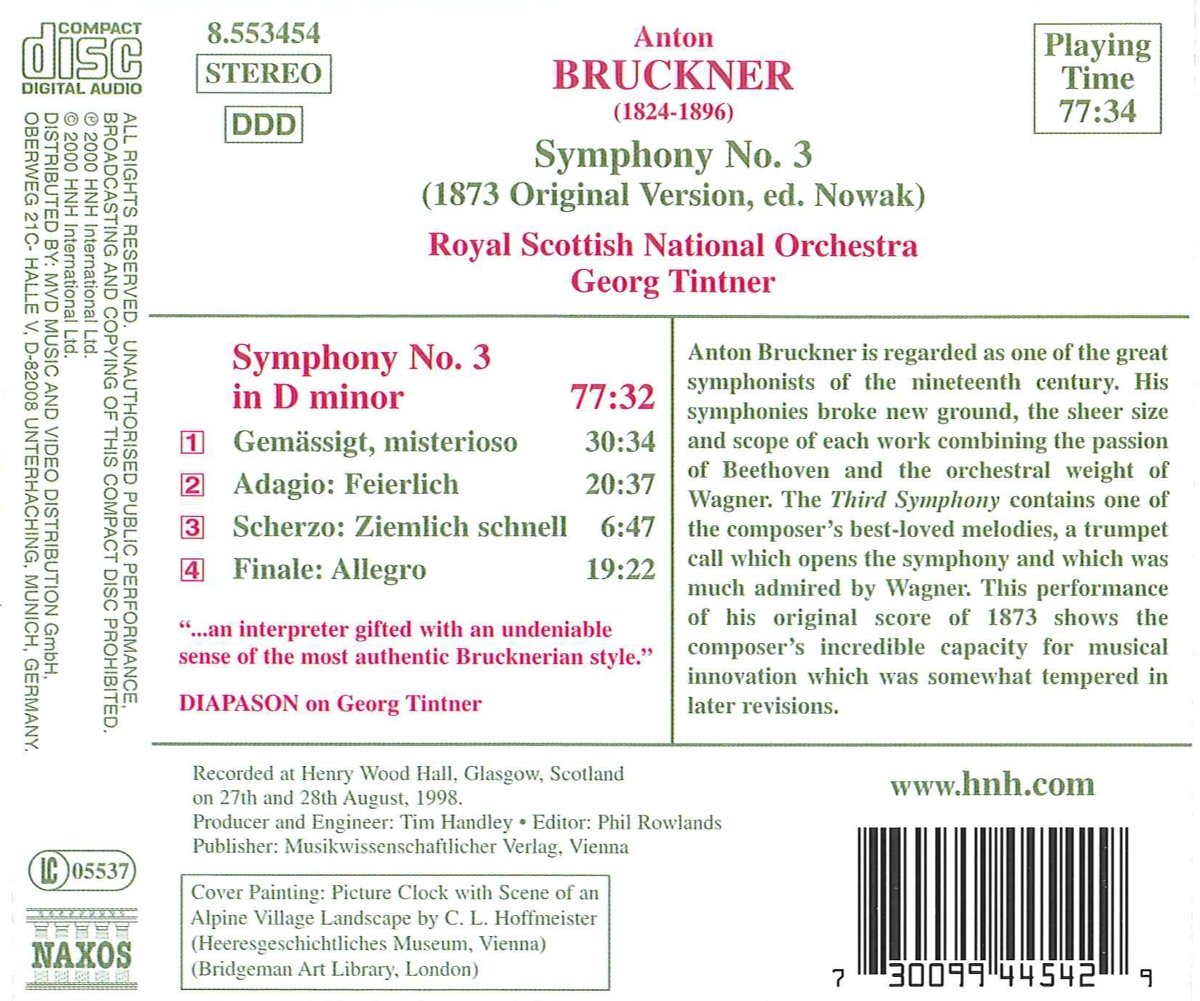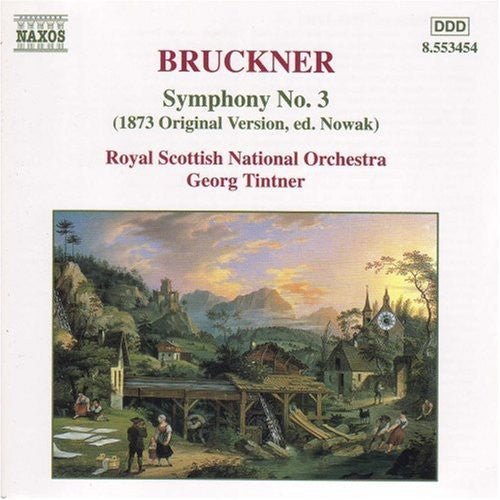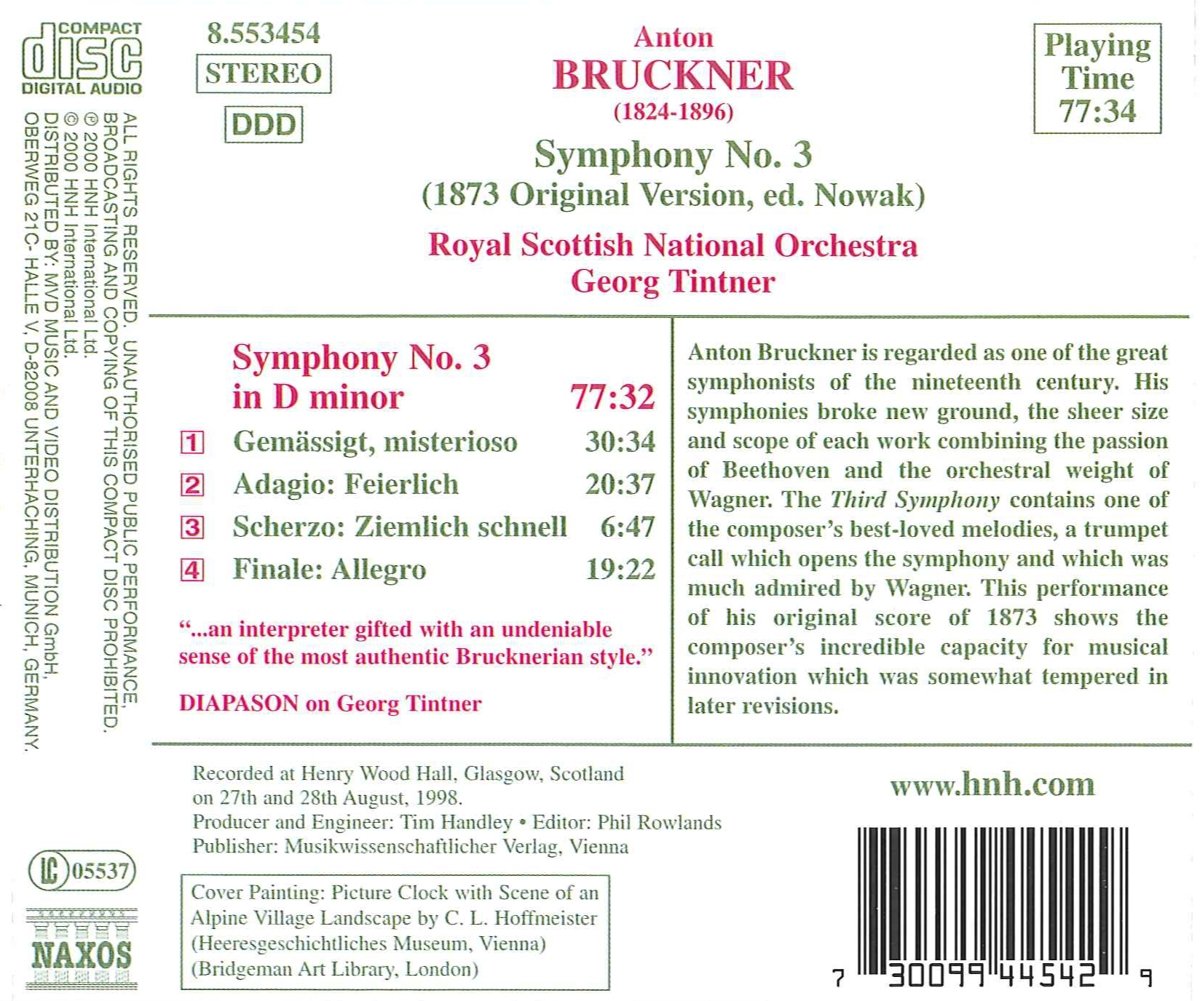1
/
of
2
Bruckner: Symphony No. 3
Bruckner: Symphony No. 3
Regular price
$10.00 USD
Regular price
$19.99 USD
Sale price
$10.00 USD
Unit price
/
per
Shipping calculated at checkout.
Couldn't load pickup availability

Every so often a recording comes out that is so powerful, so comprehensive in its interpretive vision, that it not only makes the music sound completely new, it forces a complete reappraisal of the music's overall significance. Georg Tintner's Bruckner Third is one such recording. In fact, it offers such a fundamental reappraisal of this music that it's safe to say that until you hear this recording, you have not heard Bruckner's Third Symphony. In order to understand why this is so, it's necessary to understand something of the history of the work. First composed in 1873 and dedicated to Wagner, the symphony went through at least two major revisions in the wake of its disastrous Vienna premiere. For the most part, these revisions involved cuts, but also some recasting of the basic thematic material of the first and last movement in a heavier, more "late Bruckner" style. The final, truncated version published by Nowak is the one most frequently played today, but the slightly less cut Oeser edition (the "middle" version) has been gaining favor recently, and has been recorded by conductors such as Haitink and Sinopoli.
Because Bruckner's later thoughts on the symphony reflect his more mature orchestral practice, the Third has acquired a reputation as a hybrid, a "magnificent failure" that falls between the Schubertian world of the early symphonies and his monumental later achievement. This view was reinforced by Robert Simpson's unsympathetic account of the work in his important English language study of the Bruckner symphonies. Eliahu Inbal's first recording of the original 1873 version for Teldec did nothing to dispel this impression, being a rapid and not especially well played performance that merely set out the notes that Bruckner wrote. Tintner's spacious, epic conception of the symphony couldn't be more different. In the first place, it plays for more than 77 minutes, making it Bruckner's longest symphony after the Eighth (and in fact longer than many performances of that work). But the tempos never sound slow. Rather, Tintner gives each thematic group time to breathe, to present its themes in Bruckner's characteristic blocks of sound, and along the way we make some fascinating discoveries. The first of these reveals the exposition of the first movement to be the richest and most thematically diverse that Bruckner ever wrote, with no less than four complete subject complexes. The spaciousness of the exposition makes the development section sound unusually concentrated for Bruckner, the movement's overall form confidently poised and balanced.
After the 30-minute first movement, with its huge contrasts of dynamics and texture, the lyrical adagio comes as the ideal contrast, and Tintner's gracious phrasing, combined with his ability to find just the right tempo, keeps the music moving with a real sense of inevitability. The Scherzo has never been controversial, and Tintner captures its lightness and rustic dance qualities as have few others, but it's the finale that offers the final revelation. Here, Tintner's confidence in Bruckner's vision pays huge dividends in a movement long regarded as almost a complete bust, formally speaking. With all the "cyclical" elements that were later removed still in place (the recollections of earlier themes), and a tempo that gives the music time to reveal its clear derivation from the melodies and accompaniments of the first movement, what we really have is one of Bruckner's most ambitious and far reaching formal successes, an energetic and satisfying counterbalance to the epic expanses of the symphony's opening. Tintner's belief in this symphony reveals it to be not some sort of unfortunate hybrid, but the product of a fully mature (he was 49 when he wrote it!), even radical composer. This in turn makes its initial failure in performance all the more understandable: there was certainly nothing even remotely like it in 1873. The conventional wisdom that the "real" Bruckner begins with the revised Fourth Symphony simply will not stand. It's this work that is his symphonic manifesto, and no one hearing this performance will doubt it for a second.
The Royal Scottish National Orchestra deserves a huge amount of credit for sharing Tintner's patience and conviction. The light tone of the strings, in particular, sounds especially "right" in this symphony, and in this case preferable to the darker, heavier sound of many Continental orchestras in this music. Tintner's Bruckner series has been almost uniformly excellent, but I think that this recording is the finest of them all. Its importance to our understanding of Bruckner's symphonic achievement is such that it amounts to nothing less than a premiere performance of a newly discovered masterpiece. Recordings this significant happen all too rarely. Don't miss it.
--David Hurwitz, ClassicsToday.com
Share


Product Description:
-
Release Date: February 01, 2000
-
UPC: 730099445429
-
Catalog Number: 8553454
-
Label: Naxos
-
Number of Discs: 1
-
Composer: BRUCKNER
-
Orchestra/Ensemble: Royal Scottish National Orchestra
-
Performer: Georg, Tintner


